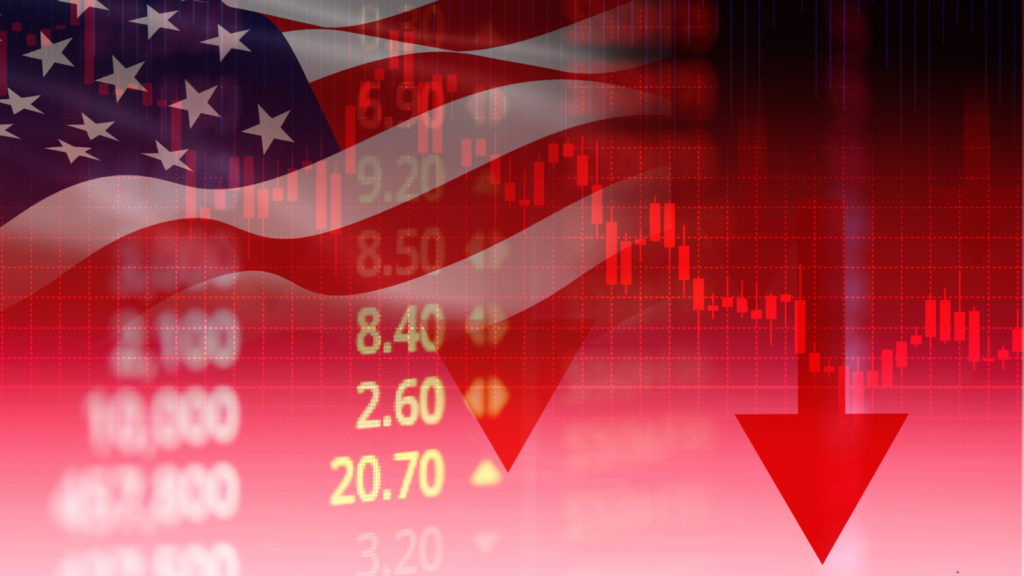What Caused Black Monday? Why Black Monday Was the Day Wall Street Almost Collapsed!-Black Monday, October 19, 1987, is remembered as one of the most shocking and significant events in the history of global finance. On that fateful day, the stock market experienced a dramatic crash that left investors, analysts, and financial institutions scrambling for answers. The Dow Jones Industrial Average (DJIA) plummeted by 508 points, or 22.6%, marking its largest single-day percentage drop ever. This event didn’t just shake Wall Street; it sent shockwaves across financial markets worldwide, raising questions about the stability of the global economy and the mechanisms of the stock market.
Background: The Build-Up to Black Monday
In the years leading up to Black Monday, the stock market had been on a steady rise, fueled by strong economic growth in the 1980s. The U.S. economy was in recovery mode after the early 1980s recession, and there was optimism across many sectors. However, by 1987, some signs of trouble were beginning to emerge. Stock prices were soaring, but many analysts and economists were concerned about the market’s overheated state. Valuations were high, and there were growing fears that stocks were becoming overvalued, detached from the reality of economic fundamentals.
Several factors were at play:
-
Global Economic Concerns: There were worries about inflation and interest rates. Central banks, particularly the U.S. Federal Reserve, had raised interest rates to combat inflation, making borrowing more expensive and potentially slowing economic growth. This led to fears that the recovery might not be sustainable.
-
Rising Trade Deficits: The U.S. was facing rising trade deficits, which created concerns about the long-term health of the economy. Many felt the economy was relying too heavily on foreign capital to finance its trade gap.
-
The Role of Program Trading: One of the critical factors that contributed to the severity of the crash was the rise of “program trading.” This computerized trading system, which was designed to buy or sell stocks based on specific criteria (such as price changes or market movements), was becoming increasingly popular. These automated systems could execute large volumes of trades in milliseconds, and they amplified the effects of market fluctuations. When the market began to drop on October 19, these automated systems started triggering mass sell-offs, further deepening the decline.
-
Market Psychology: There was a sense of panic in the air as investors began to fear that the bull market was coming to an end. The psychological impact of a rapidly falling market created a vicious cycle where more and more investors sold their holdings, driving prices down even further.
The Day of the Crash: October 19, 1987
On October 19, 1987, Black Monday arrived without warning. The day started off relatively calm, but by mid-morning, panic began to set in. As investors watched stock prices plummet, they rushed to sell their holdings, fearing even bigger losses. The NYSE was soon overwhelmed by a flood of sell orders, and the automated trading systems went into overdrive, exacerbating the situation.
The Dow Jones Industrial Average (DJIA) dropped by a staggering 508 points, closing at 1,738.74—its worst percentage drop in history at the time. This represented a 22.6% loss in a single day, an unprecedented crash that left many in disbelief. The global stock markets followed suit. Markets in Europe and Asia also experienced sharp declines, and it was clear that this was not just a localized event in the U.S. but a worldwide financial panic.
Why the Market Reacted So Drastically
Several factors contributed to the severity of the crash:
-
Program Trading and Automated Systems: As mentioned earlier, program trading played a key role in amplifying the market’s decline. Once the market began to fall, these automated systems sold off vast amounts of stock in a chain reaction, exacerbating the panic.
-
Market Overvaluation: Many experts believed that the market had become overvalued, and Black Monday was simply a correction. Stock prices had risen too quickly, and the market needed a reset. The crash wiped out some of those gains, bringing stock prices more in line with economic fundamentals.
-
Global Fear: The interconnectedness of global financial markets meant that news of the crash spread quickly. As investors saw stocks plummeting worldwide, fear spread like wildfire, contributing to further declines in markets across the globe.
-
Psychological Panic: The suddenness of the crash created widespread panic. Fear took over, and people started to sell out of sheer uncertainty. Investors worried that the market might continue to collapse, and the lack of confidence caused further downward pressure on prices.
The Aftermath: The Recovery and Long-Term Impact
Despite the severity of Black Monday, the aftermath was somewhat surprising. Unlike many other stock market crashes, Black Monday did not lead to a prolonged recession. In fact, the market began to recover relatively quickly.
-
Market Recovery: Within two years, the market had regained most of the losses from Black Monday. The Federal Reserve’s intervention, including lowering interest rates to stimulate the economy, helped restore confidence in the markets.
-
Regulatory Changes: The crash prompted a reevaluation of market practices and regulations. One significant change was the introduction of “circuit breakers,” which are mechanisms designed to temporarily halt trading if prices move too quickly in either direction. This was aimed at preventing another event like Black Monday from happening.
-
Shift in Trading Practices: Black Monday also highlighted the risks of program trading and automated systems. In response, new safeguards and regulations were introduced to ensure that automated trading systems would not trigger excessive market movements in the future.
-
Global Impact: The crash had a lasting impact on global financial markets. While the U.S. quickly recovered, some other countries, especially those with emerging markets, took much longer to recover from the crisis. The global financial system was fundamentally altered by the crash, leading to more interconnectedness and, in some ways, more volatility.
-
Market Psychology and Investor Behavior: One of the key lessons from Black Monday was the importance of investor psychology. The event reinforced the idea that financial markets are often driven not just by economic data but by fear, greed, and panic. Investors began to focus more on managing risk and diversifying their portfolios.
A Day That Shaped the Financial World
Black Monday was a defining moment in the history of financial markets. It exposed vulnerabilities in the global economy and stock market infrastructure, especially concerning automated trading systems. The event left an indelible mark on how financial markets are regulated and how investors approach risk.
Though the market quickly recovered and the world avoided a full-scale financial collapse, Black Monday remains a cautionary tale about the dangers of unchecked market speculation, the psychological factors that drive investor behavior, and the need for proper safeguards in the financial system.
The day Wall Street almost collapsed served as a stark reminder: the stock market can rise to great heights, but it can also fall just as dramatically, often in ways that no one can predict.
From Venice to the Mongol Empire- Marco Polo’s Epic Journey | Maya

:max_bytes(150000):strip_icc()/stock-market-169975453-0cb2eb62ac80438395b9bc6cd10c7235.jpg)


